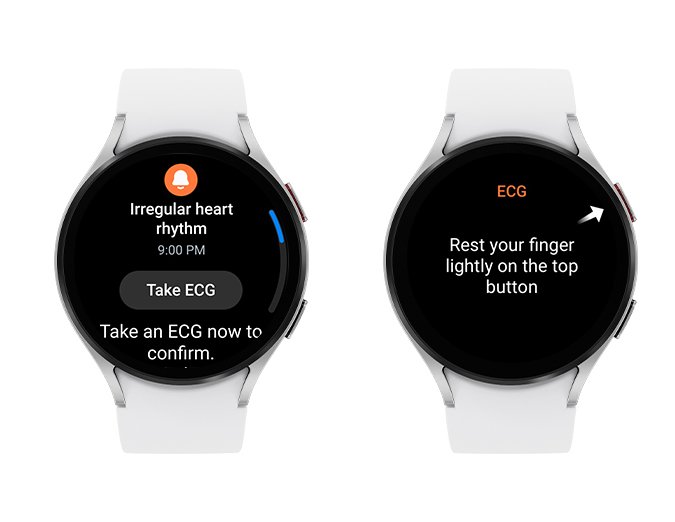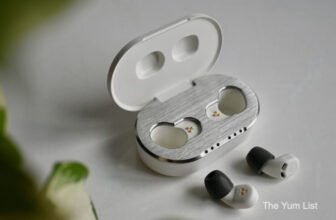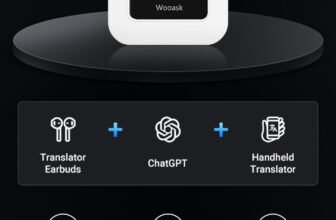The Pulse of the Future: Wearable ECG Monitor

How Wearable ECG Monitors Are Revolutionizing Heart Health
James was an otherwise healthy 47-year-old software engineer. His work was high-pressure, but he exercised regularly and tried to eat right. One afternoon, while walking his dog, he felt a strange flutter in his chest, almost like his heart had skipped a beat. He shrugged it off. But over the next few days, the fluttering returned, sometimes lasting several seconds.
At the urging of his wife, James visited his doctor. Unfortunately, during his check-up, his heart was beating normally. The physician recommended he wear a Holter monitor for 24 hours to detect any irregularities, but James balked at the thought of being tethered to a clunky device with wires. That’s when the doctor mentioned a new option: a wearable ECG monitor.
A New Era in Heart Health Monitoring
Wearable ECG (electrocardiogram) monitors have transformed from niche tech into mainstream health tools. These compact devices are built into smartwatches, patches, rings, or even chest straps, allowing users to continuously monitor their heart rhythms without being confined to a clinical setting.
With cardiovascular disease remaining the leading cause of death globally, early detection of heart anomalies, such as arrhythmias like atrial fibrillation (AFib), can be life-saving. Wearable ECGs offer the possibility of real-time monitoring, greater accessibility, and even integration with healthcare providers via apps or cloud platforms.
James purchased a wearable ECG device the very next day. Within two weeks, the device captured an episode of atrial fibrillation, which he forwarded to his cardiologist. That small gadget may have saved his life.
How Do Wearable ECG Monitors Work?
An ECG measures the electrical signals that control the rhythm of the heartbeat. In a clinical setting, this involves multiple electrodes placed on the body, connected to a machine that records the electrical activity of the heart.
Wearable ECGs function on a similar principle, though often with fewer leads (electrodes). The most common types include:
-
Smartwatches with ECG capability (e.g., Apple Watch, Fitbit Sense)
-
Portable handheld ECG devices (e.g., KardiaMobile)
-
Chest strap monitors for athletic use (e.g., Polar H10)
-
Wearable patches that adhere to the skin (e.g., Zio patch)
These devices can monitor for signs of arrhythmias, tachycardia, bradycardia, and other abnormalities, often alerting the user and storing the data for physician review.
How Accurate Are Wearable ECG Monitors?
This is the big question: Can a consumer-grade ECG device deliver clinical-level accuracy?
The Good News:
Numerous studies have shown that high-quality wearable ECG devices are remarkably accurate, especially for detecting atrial fibrillation. The Apple Watch Series 4 and later, for example, has been FDA-cleared for detecting AFib. Similarly, AliveCor’s KardiaMobile, another portable ECG device, has received FDA clearance for multiple heart conditions.
But There’s a Catch:
Wearable ECGs typically use single-lead technology, while hospital-grade ECGs use 12 leads for a more comprehensive view. This means wearable ECGs are excellent for spotting rhythm irregularities but not suitable for diagnosing all types of heart problems.
So, are they accurate? Yes, for many common conditions. No, for complex diagnostics. The key is to use them as a first line of defense, not a full replacement for clinical tests.
How Much Does a Wearable Heart Monitor Cost?
The cost of wearable ECG devices varies widely depending on features, brand, and form factor. Here’s a general breakdown:
| Device Type | Price Range |
|---|---|
| Smartwatches with ECG | $200 – $800 |
| Handheld ECG Devices | $80 – $300 |
| Chest Strap ECG Monitors | $70 – $150 |
| Wearable ECG Patches | Prescription required |
Some popular options include:
-
Apple Watch Series 9 – ~$399+
-
Fitbit Sense 2 – ~$299
-
KardiaMobile 6L – ~$149
-
Withings ScanWatch – ~$279
-
Polar H10 Chest Strap – ~$90
Insurance may cover certain prescribed ECG patches (like Zio) but generally doesn’t reimburse for consumer devices unless part of a broader treatment plan.
What Is the Best ECG Monitor for Home Use?
The ideal device depends on the user’s goals. Here are some top picks based on different needs:
1. For General Health Tracking
Apple Watch Series 9 / Ultra
-
Pros: FDA-cleared ECG, heart rate alerts, seamless iPhone integration
-
Cons: Expensive, limited Android compatibility
2. Best Value & Reliability
KardiaMobile 6L by AliveCor
-
Pros: FDA-cleared, 6-lead ECG, compact, easy sharing with doctors
-
Cons: Requires manual activation, subscription for advanced features
3. Fitness-Focused ECG Monitoring
Polar H10 Heart Rate Sensor
-
Pros: Ultra-accurate chest strap ECG, great for athletes
-
Cons: No display or smartphone-independent operation
4. Best Hybrid Smartwatch
Withings ScanWatch
-
Pros: Stylish analog design, ECG and SpO2 monitoring
-
Cons: Interface not as dynamic as Apple Watch or Fitbit
Is Fitbit ECG Reliable?
Fitbit entered the ECG space with its Sense and Sense 2 smartwatches. Its ECG app is FDA-cleared and can detect signs of atrial fibrillation.
In terms of accuracy, Fitbit’s ECG functionality holds up well against other consumer-grade devices. A study published in The American Journal of Cardiology found high correlation between Fitbit and clinical ECGs for AFib detection.
However, Fitbit ECGs require the user to remain still during a 30-second scan, and like others, it is limited to single-lead recordings.
Bottom Line: Yes, Fitbit ECG is reliable for screening AFib, but it’s not a substitute for a clinical ECG if symptoms persist or worsen.
Is It Worth Buying an ECG Machine for Home Use?
Whether it’s worth buying depends on several factors:
Yes, If You:
-
Have a history of heart issues (AFib, palpitations, arrhythmia)
-
Want peace of mind through early detection
-
Need to share real-time data with a healthcare provider
-
Are an athlete optimizing heart rate training
-
Care for elderly family members at home
Maybe Not, If You:
-
Are under 40 with no risk factors
-
Only plan to use it sporadically
-
Expect it to replace professional diagnosis
Consider it an investment in preventive care, similar to a home blood pressure cuff or glucose monitor. For people with heart risks or symptoms, the $100–$400 cost is relatively minor compared to the potential benefit of early detection.
Living with a Wearable ECG Monitor: Real Stories
Maya’s Story:
Maya, 65, started experiencing occasional dizziness and fatigue. Her doctor suspected arrhythmia but couldn’t confirm it. With a KardiaMobile, she was able to capture a reading during a dizzy spell. The device flagged bradycardia, leading to a pacemaker implant that resolved her symptoms.
Leo’s Story:
Leo, a triathlete in his 30s, wears a Polar H10 chest strap during workouts. He noticed abnormally high heart rates post-training. Upon reviewing the data, a physician diagnosed exercise-induced arrhythmia. Early detection helped adjust his training regimen.
The Future of ECG Wearables
With advancing AI algorithms and improved sensors, wearable ECGs are getting smarter. Emerging trends include:
-
Continuous ECG monitoring (e.g., wearable patches for 14 days)
-
Integration with telemedicine
-
AI-driven alerts for proactive care
-
Personalized health insights from aggregated data
Tech companies are partnering with hospitals, and some insurers are even offering discounts for users who wear ECG-enabled devices.
In the near future, your wrist, chest, or even a ring may alert you to a life-threatening condition before you feel a thing.
Should You Buy a Wearable ECG Monitor?
For James, the decision was clear, and potentially life-saving. For you, it depends on your health profile and goals.
Pros:
-
Early detection of arrhythmias
-
Continuous monitoring and real-time alerts
-
Data sharing with healthcare providers
-
Peace of mind
Cons:
-
Not a replacement for clinical ECG
-
Subscription fees (in some cases)
-
User error or motion artifacts can affect accuracy
If you have a family history of heart disease, are experiencing symptoms, or just want a deeper understanding of your heart health, then yes, investing in a wearable ECG monitor is worth it.
As heart health becomes a more personal, tech-enabled journey, wearable ECGs are no longer luxury gadgets. They’re essential tools, like having a cardiologist in your pocket.
Final Word: Your heart is always talking. A wearable ECG helps you listen.





